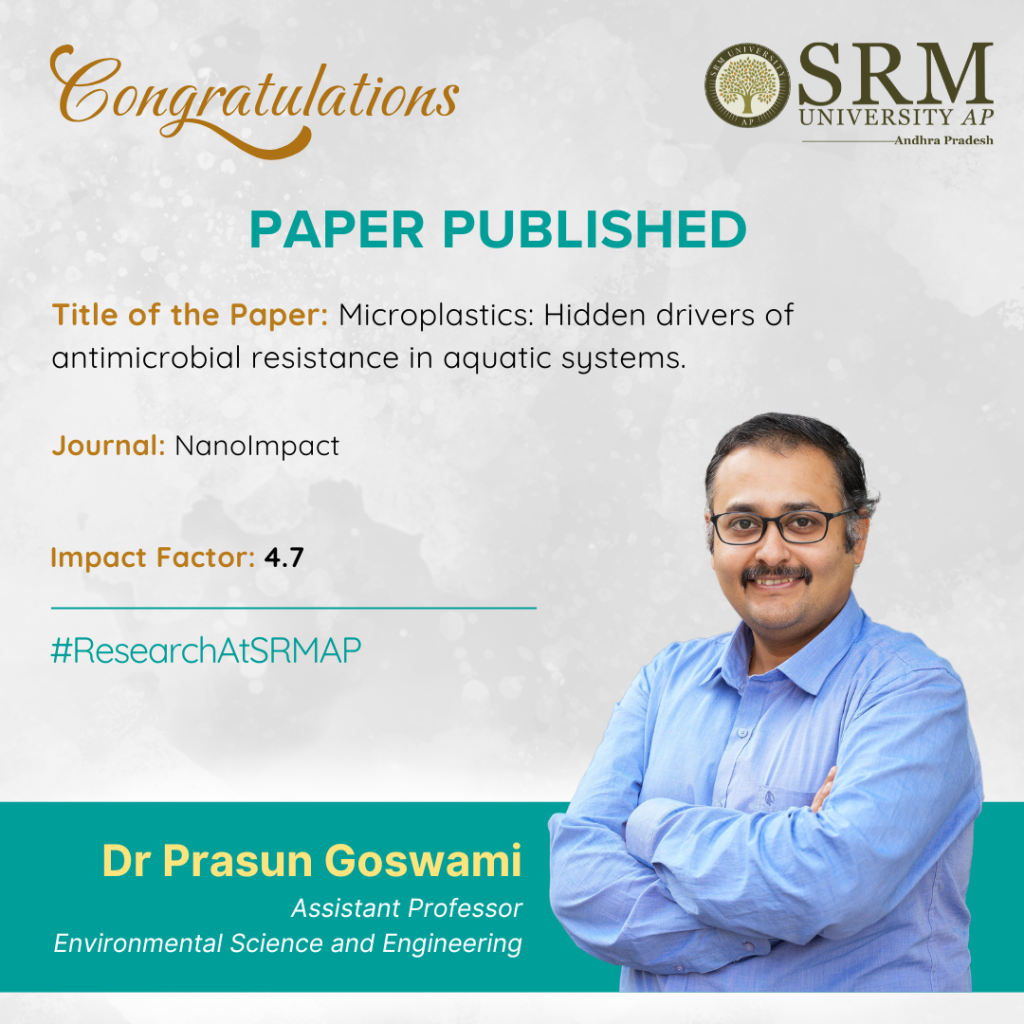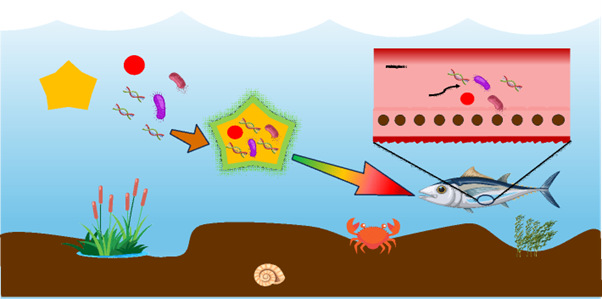
Dr Prasun Goswami, Assistant Professor from the Department of Environmental Science and Engineering, published a paper titled “Microplastics: Hidden drivers of antimicrobial resistance in aquatic systems”, in the Q1 journal, NanoImpact. His research reveals a concerning connection between microplastics and antimicrobial resistance in oceans. The study uncovers how microplastics in our oceans can harbour antibiotic-resistant pathogens, posing significant threats to marine ecosystems and human health. The paper not only sheds light on the topic but also proposes essential steps to better understand and manage the emerging threat.
Abstract
Tiny plastic particles, called microplastics, are commonly found in oceans, rivers, and lakes. These particles quickly gather layers of bacteria and other microbes, forming what scientists call the “plastisphere.” This plastisphere can carry harmful bacteria, including those that are resistant to antibiotics. Together, these plastic-based communities and the genes they carry make up what’s now being called the “Plastiome.” This review looks at how microplastics interact with bacteria and antibiotic resistance in water environments. It highlights how these plastics can collect and spread dangerous germs and genes that make infections harder to treat. The result is a growing health risk not just for marine life, but also for people. The review also points out areas where more research is needed and suggests ways to better understand and manage the spread of antibiotic resistance through plastic pollution in water.
Practical Implementation/ Social Implications of the Research
Understanding the Plastiome—the microbial life thriving on microplastics—is not just a scientific curiosity; it has real-world consequences. As these plastic particles travel through our oceans, they act as floating hubs for antibiotic-resistant bacteria, which can potentially enter the food chain via seafood or contaminate drinking water sources. The research highlights the urgent need for improved waste management, plastic use reduction, and policy frameworks to monitor microplastic pollution and its microbial cargo. By identifying how microplastics help spread antimicrobial resistance (AMR), the study can help inform public health strategies, guide marine conservation policies, and support international efforts to tackle both plastic pollution and the growing AMR crisis. In essence, tackling the Plastiome is not just about saving the oceans; it’s about protecting ecosystems, public health, and the future.
Collaborations
This work was conducted in collaboration with the National Institute of Animal Health, National Agriculture and Food Research Organization (NIAH-NARO), Tsukuba, Japan.
Future Research Plans
As part of the ongoing research, Dr Prasun explores how different plastic polymers interact with microbial communities and antibiotic resistance (AMR) genes in aquatic environments. Not all plastics behave the same—some may provide a more favourable surface for harmful microbes or facilitate the spread of resistance genes more efficiently. By understanding these polymer-specific interactions, he aims to identify which types of plastics pose the greatest environmental and public health risks. This research has important implications for designing safer materials, guiding environmental regulations, and developing strategies to curb the spread of AMR through plastic pollution in marine and freshwater ecosystems.</p


